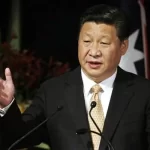On 5:27 am, Nov. 25, a train carrying 100 TEUs (twenty-foot equivalent units) of machine parts,
garments and shoes started its engine in Changchun, northeast China’s Jilin province, and
departed for Russia’s Yekaterinburg. It was the 571st China-Europe freight train dispatched by
China Railway Shenyang Group.
In the first 10 months this year, China-Europe freight trains have made 12,605 trips and
transported nearly 1.22 million TEUs, up 26 percent and 33 percent year on year, respectively.
Both figures exceeded the total amount in 2020.
The safe and stable freight service that connects China and the European continent has played a
vital role in ensuring smooth logistics among China and other countries and regions along the
Belt and Road amid the COVID-19 pandemic.
Transport connectivity is a foundation and a crucial guarantee for the construction of the Belt
and Road. In the eight years after the Belt and Road Initiative (BRI) was proposed, a general
connectivity framework consisting of six corridors, six connectivity routes and multiple countries
and ports has been constantly improved, laying a solid foundation for the Belt and Road
construction.
New progress has been achieved in connectivity projects under the Belt and Road framework.
The China-Laos Railway officially started operation on Dec. 3. The upgrade project for the
Pakistan Railway’s Mainline-I has completed technical consultation and is currently going
through financing negotiation. Feasibility studies over a railway connecting China and Nepal is
also under progress.
So far, the two major road projects of the China-Pakistan Economic Corridor have been delivered
and put into operation, and the bridge linking China’s Heihe and Russia’s Blagoveshchensk has
been completed and is technically ready for operation.
On maritime cooperation, the Greece-based Piraeus Port, which has received investment from
China Ocean Shipping Company (COSCO), has finished the second round of shareholding rights
transfer. It has further consolidated the port’s position as the largest harbor in the
Mediterranean. Besides, other China-invested ports, including those in Djibouti, Pakistan’s
Gwadar and Sri Lanka’s Hambantota are also under sound management.
According to COSCO, the company has invested 64.2 billion yuan ($10.08 billion) in Belt and Road
countries and regions, building 20 container terminals and 195 routes for container vessels. It
has allocated a shipping capacity of over two million TEUs to routes along the Belt and Road,
which accounts for 68 percent of the total container shipping capacity of the company.
In recent years, China has rapidly expanded its international transport network. As a result, it is
seeing prominently improved connectivity with its neighboring countries. At present, the
country’s shipping services cover all coastal countries along the Belt and Road, and China ranks
first in the world when it comes to the Liner Shipping Connectivity Index.
Since April 2019, China has signed agreements on international road transportation with multiple
countries, including Georgia, Belarus, and Laos. It signed a transit transport agreement with
Nepal, opened six routes stipulated in an SCO agreement on international road transportation
facilitation, and implemented the Customs Convention on International Transport of Goods
Under Cover of TIR Carnets.
Under the BRI framework, China has signed 22 agreements on international road transportation
facilitation with 19 countries, and 70 bilateral and regional shipping agreements with 66
countries and regions. It has also signed bilateral inter-governmental air transport agreements
with 100 countries, maintained regular cargo flights with 54 countries, and reached regional air
transport agreement with ASEAN and the European Union. In addition, the country has signed
cooperation documents on postal services with 22 countries.
“We’ll keep refining international logistics channels, enhance capacity building in international
cargo transport, and accelerate the construction of a connected, safe and efficient logistics
network, so as to guarantee the safety and smoothness of the global logistics and supply chain
system, and promote the high-quality development of Belt and Road connectivity,” said an
official with the country’s Ministry of Transport.



